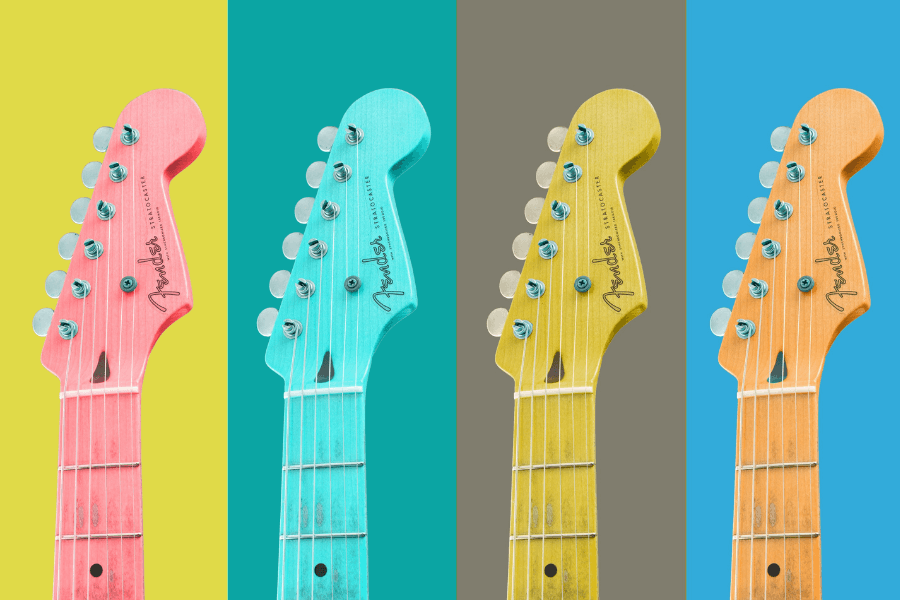What do Albert Einstein and Billy Joel have in common? One is a notorious genius who brought us the theory of relativity. A classic left-brain person.
The other is an internationally acclaimed performer, piano man, and songwriter. What most people would call a right-brain person. So how are they linked?
Albert Einstein famously stated, “If I were not a physicist, I would probably be a musician.” Music often showed up in Einstein’s thoughts and daydreams. He claimed that he viewed his own life in musical terms.
Billy Joel had this to say about music, “I think music in itself is healing. It’s an explosive expression of humanity. It’s something we are all touched by. No matter what culture we’re from, everyone loves music.”
How can one thing have an effect on the left and right brain at the same time? Science has given us a picture of how music affects both hemispheres of the human brain. Keep reading to find out how.
Left and Right Brain
Have you ever heard someone say “I’m a right-brain person?” or “I don’t really get into artsy stuff, I’m a left-brain person.” It’s true the right brain has a lot more to do with creativity.
The reality is, arts like music take both hemispheres; but so do calculations. Each task we have as human beings requires our right and left brain to work in some capacity. Some tasks, like music, stimulate different parts of our brain at the same time.
Here’s a snapshot of some key left and right brain functions.
What Are Some Key Functions of the Right Brain?
The right brain is the body’s creativity center. It’s where imagination, intuition, and non-verbal language process. The right brain is also responsible for impulse.
The right brain processes nuances of language and speech. If a word has more than one meaning or can be used in different ways, the right brain makes that distinction.
What Are Some Key Functions of the Left Brain?
Language patterns and sounds are organized in the left brain before leaving your mouth as words and phrases. The ability to order and register objects in relation to other objects also takes place here.
The left brain is a processing center. This is where the statistics, planning, and calculating take place. It’s also the area responsible for criticism and logic.

Where Left and Right Brain Work Together
The brain’s frontal lobe consists of the front part of the right and left hemispheres. The frontal lobe processes:
- mood
- personality
- self-awareness
- moral reasoning
- executive functioning
- attending
- memory
- language
- social cues
In addition, many instruments require musicians to do different things with each hand at the same time. Think about playing a piano piece or learning to play a flute or violin. These tasks require the left and right brain to work together.
Executive Functioning
Playing an instrument, for example, requires ordered steps. The person learning the instrument needs to set up, tune, and practice in a certain order.
The instrument itself needs to be learned in ordered steps. The student must first learn the fundamentals: rhythm, note names, how to make each note on their instrument. Playing an instrument in an ensemble adds another layer of ordered steps as well.
Remembering to practice regularly, what to play, and how to play it all may also sharpen the learner’s executive functioning skills. Kids and adults are encouraged to keep using and improving executive functioning skills by practicing, playing, and caring for their instrument(s).
Language and Sensory Awareness

University of Montreal researcher Simon Landry studies the effects of music on the brain. According to Landry, musicians have faster tactile, audio-tactile, and auditory reaction times. Musicians are also better than non-musicians at organizing and using multisensory input.
It’s no surprise, then, that playing an instrument can increase language and executive functioning skills. An NYU study found that children involved in a music program saw a 90% increase in verbal intelligence. Children in the music group showed advances in an executive functioning task.
Music can also aid in creating new neuropathways where they’ve been damaged. Many individuals with brain damage or strokes use music as a part of their rehabilitation to increase language and learning.
Mood and Memory
Those neuropathways can also help people remember things. How did you learn the ABCs? Maybe you learned the math facts or the US States in school by singing a song.
Performing and listening to music can reinforce pathways in the brain and create strong muscle memory, working memory, and information recall. Playing an instrument and reading music requires the musician to remember what they read (just seconds ago) and play note after note. This can have a positive impact on working memory.
You probably don’t need a handful of studies to tell you that music makes you feel things. One of the brain’s first responses to music is to release dopamine, which can cause a positive response.
Modern therapies have built on this same principle of brain stimulation. Treatments like TMS therapy use noninvasive stimulation to improve mood regulation and mental health. Just as music engages both hemispheres of the brain, TMS therapy encourages healthier brain activity that supports emotional balance and cognitive function.
The Benefits of Learning Music
Playing an instrument and learning music can have positive impacts on left and right brain functions. Many studies have shown that music stimulates different information centers in the brain. This can result in increased memory, language skills, executive functioning, and emotional responses.
What to learn more about how you or your child can benefit from music lessons? Contact Sloan School of Music today to find out how music can have a positive impact on your life. We look forward to hearing from you!








